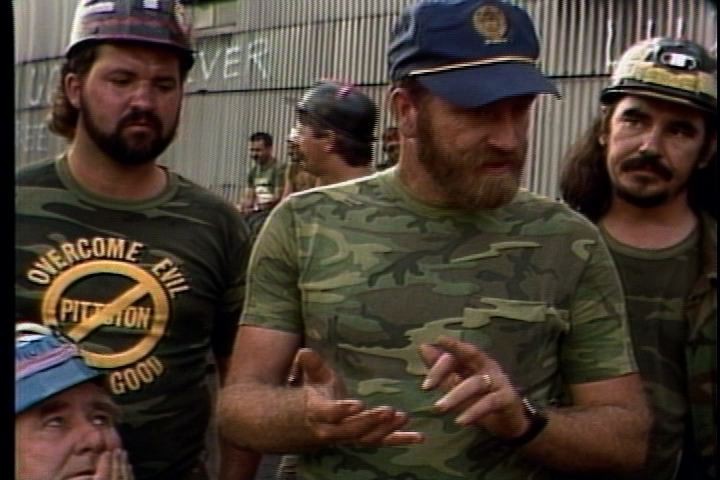
Justice in the Coalfields
- Anne Lewis
- 1995
 Color
Color- 55:33
- 3/4" U-matic video
Film Description
Justice in the Coalfields demonstrates how current labor law has crippled the collective bargaining power of unions and weighed the scales of justice against working people. The documentary follows the 1988 United Mine Workers strike against the Pittston Coal Company that followed the expiration of their contract and Pittston's termination of the medical benefits of 1,500 pensioners, widows, and disabled miners. Justice in the Coalfields documents the community-wide outrage that Pittston's violation of a long-standing social contract ignited. The film captures events in southwestern Virgina — the heart of the strike and a right-to-work state — showing hundreds of state troopers escorting “replacement workers” through the picket lines. The film captures union members, their families and friends responding with mass civil disobedience that resulted in over 4,000 arrests, as well as state and federal judges reacting with injunctions and fining the UMWA more than $64 million. These events are given context through conversations with the rank-and-file, a federal judge, a public interest lawyer, the coal company president, and the public affairs director of the National Right to Work Committee for a clear-eyed look at the strike's social, cultural, and economic impact on coalfield communities.Screenings & Festivals
- International Labor Film Festival
- Peace and Justice Activists, National Organizers Alliance
- Southern Sociological Society Conference
- West Virginia Film Festival
Not yet preserved.
To support the work of preserving and safeguarding the collections, please consider designating a donation to Appalshop Archive.
Reviews
“A compelling, timely, and important documentar. A must-see for anyone interested in one of the most important labor struggles of recent years.” — George Meany Center for Labor Studies
“A provocative program that should be seen widely … a lawyer cannot come away from the film without some sense that the issues of justice and and law are ambiguous, that justice and law are at best distant cousins.” — Washington and Lee University
“Excellent organizing tool, especially for bringing disparate groups together.” — West Virginia Civil Liberties Union
“After witnessing this spectacle of pain and hardship, one wonders why there isn’t more violence on the part of the workers and the mountain people of the coalmining region.” — University of Minnesota

















